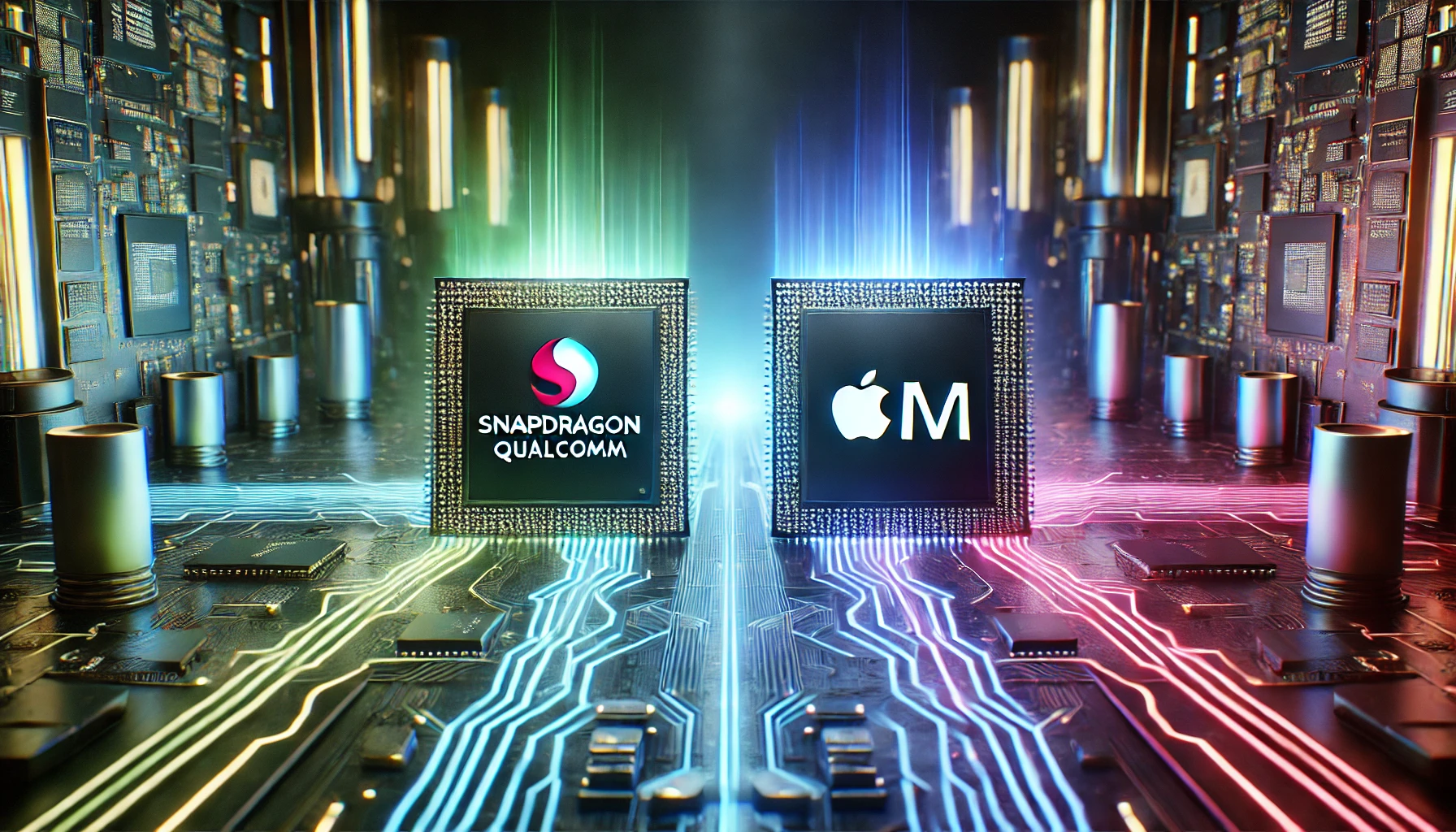Overview
In the fast-paced world of technology, the race to develop the most powerful and efficient processors never slows down. Qualcomm’s Snapdragon ARM-based processors have been a staple in the mobile industry, powering a vast array of smartphones and tablets. However, with the introduction of Apple’s M1 and subsequent M-series chips, the competition has heated up significantly. Apple has set a new benchmark with its ARM-based processors, showcasing unparalleled performance and efficiency. But Qualcomm is not one to back down. Enter the new Snapdragon ARM-based processors, designed to challenge Apple’s dominance head-on. This article delves into the advancements of the latest Snapdragon processors and how they are poised to compete with Apple’s M chips.
The Evolution of ARM-Based Processors
ARM (Advanced RISC Machine) architecture has been at the heart of mobile computing for decades. Known for its efficiency and power management, ARM processors have powered billions of devices worldwide. The transition from traditional x86 architecture to ARM in high-performance computing has been a game-changer, driven by the need for better power efficiency and thermal management without compromising performance.
Qualcomm’s Snapdragon: A Brief Overview
Qualcomm’s Snapdragon processors have been synonymous with high-performance mobile computing. From the Snapdragon 800 series, which brought significant improvements in CPU and GPU performance, to the Snapdragon 888, which set new standards for AI processing and connectivity, Qualcomm has consistently pushed the envelope.
The Rise of Apple’s M Chips
Apple’s transition from Intel to its custom ARM-based M1 chip marked a significant milestone in computing history. The M1 chip, introduced in late 2020, brought unprecedented performance and efficiency to Apple’s MacBooks and iPads. The subsequent M1 Pro, M1 Max, and M1 Ultra chips further cemented Apple’s position as a leader in ARM-based computing.
Snapdragon’s New Contender: The Latest ARM-Based Processors
Qualcomm’s latest Snapdragon processors aim to take the fight to Apple with a blend of cutting-edge technology and innovative features. Let’s dive into what makes these new Snapdragon processors a formidable opponent.
1. Advanced CPU Architecture
The new Snapdragon processors feature an advanced ARM Cortex-X series CPU cores, promising significant improvements in performance and power efficiency. Qualcomm’s custom Kryo cores, built on ARM’s latest designs, offer higher clock speeds and better thermal management. This architecture ensures that Snapdragon processors can handle intensive tasks, such as video editing and 3D rendering, with ease.
2. Enhanced GPU Performance
Qualcomm’s Adreno GPUs have always been a strong point, and the new Snapdragon processors are no exception. With a focus on delivering superior graphics performance, the latest Adreno GPUs support advanced rendering techniques, real-time ray tracing, and high-resolution displays. This makes Snapdragon processors ideal for gaming, AR/VR applications, and creative workflows.
3. AI and Machine Learning Capabilities
AI and machine learning are becoming increasingly important in modern computing. Qualcomm’s Hexagon AI processors bring substantial improvements in AI performance, enabling faster and more efficient processing of AI tasks. This includes enhanced voice recognition, image processing, and predictive analytics, giving Snapdragon-powered devices a competitive edge.
4. 5G Connectivity
The integration of 5G technology is a significant highlight of the new Snapdragon processors. With support for mmWave and sub-6 GHz bands, these processors offer blazing-fast download and upload speeds, low latency, and improved network reliability. This ensures that devices powered by Snapdragon processors are ready for the next generation of mobile connectivity.
5. Power Efficiency and Battery Life
One of the critical advantages of ARM architecture is power efficiency. The new Snapdragon processors are designed with a focus on maximizing battery life without sacrificing performance. This is achieved through advanced power management features, including dynamic voltage and frequency scaling, and improved thermal management.
The Competitive Landscape: Snapdragon vs. Apple M Chips
With the new Snapdragon processors, Qualcomm aims to challenge Apple’s M chips on multiple fronts. Here’s how they stack up against each other:
Performance Showdown
Apple’s M1 chips have set a high bar for performance, thanks to their unified memory architecture and efficient design. However, Qualcomm’s new Snapdragon processors are no slouch. With high-performance CPU cores and powerful GPUs, Snapdragon processors are capable of delivering comparable performance in real-world tasks. Benchmarks indicate that the latest Snapdragon processors can go toe-to-toe with Apple’s M1 chips in various scenarios, including gaming, video editing, and AI processing.
AI and Machine Learning
Apple’s Neural Engine has been a standout feature of the M1 chips, providing exceptional AI and machine learning capabilities. Qualcomm’s Hexagon AI processors, with their enhanced performance and efficiency, offer a compelling alternative. Snapdragon processors excel in AI-driven tasks, such as real-time language translation, augmented reality, and personalized user experiences.
Connectivity and 5G
While Apple’s M1 chips offer impressive performance, they lack integrated 5G connectivity. Qualcomm’s new Snapdragon processors, on the other hand, come with built-in 5G modems, providing superior connectivity options. This makes Snapdragon-powered devices better equipped for the future of mobile communication, especially in areas where 5G networks are being rapidly deployed.
Battery Life and Efficiency
Apple’s M1 chips have been praised for their excellent power efficiency, resulting in impressive battery life for MacBooks and iPads. Qualcomm’s Snapdragon processors, with their advanced power management features, also deliver exceptional battery performance. The ability to dynamically adjust power consumption based on workload ensures that Snapdragon-powered devices can achieve long battery life while maintaining high performance.
Ecosystem and Software Support
Apple’s tight integration of hardware and software has been a significant advantage for the M1 chips. The macOS and iPadOS ecosystems are optimized to take full advantage of the M1 architecture. Qualcomm, however, has the advantage of widespread adoption across various devices and platforms. Snapdragon processors power a diverse range of devices, from smartphones to laptops, and are supported by both Android and Windows ecosystems. This versatility gives Snapdragon an edge in terms of broader market penetration and software compatibility.
The Future of ARM-Based Computing
The competition between Qualcomm’s Snapdragon processors and Apple’s M chips is just beginning. As both companies continue to innovate, we can expect even more powerful and efficient ARM-based processors in the future. The battle for supremacy in the ARM processor market will drive advancements in performance, power efficiency, and connectivity, benefiting consumers and pushing the boundaries of what is possible in computing.
Conclusion: The Ultimate Showdown
The introduction of Qualcomm’s new Snapdragon ARM-based processors marks a significant milestone in the ongoing battle for dominance in the high-performance computing market. While Apple’s M1 chips have set a new standard, the latest Snapdragon processors are poised to offer a formidable challenge. With advancements in CPU and GPU performance, AI capabilities, 5G connectivity, and power efficiency, Snapdragon processors are well-equipped to compete head-to-head with Apple’s M chips.
As the competition heats up, consumers stand to benefit from the resulting innovations and improvements. Whether you are a gamer, a creative professional, or a business user, the choice between Snapdragon and Apple M chips will come down to your specific needs and preferences. One thing is certain: the future of ARM-based computing is bright, and the battle between Qualcomm and Apple will continue to drive the industry forward.





